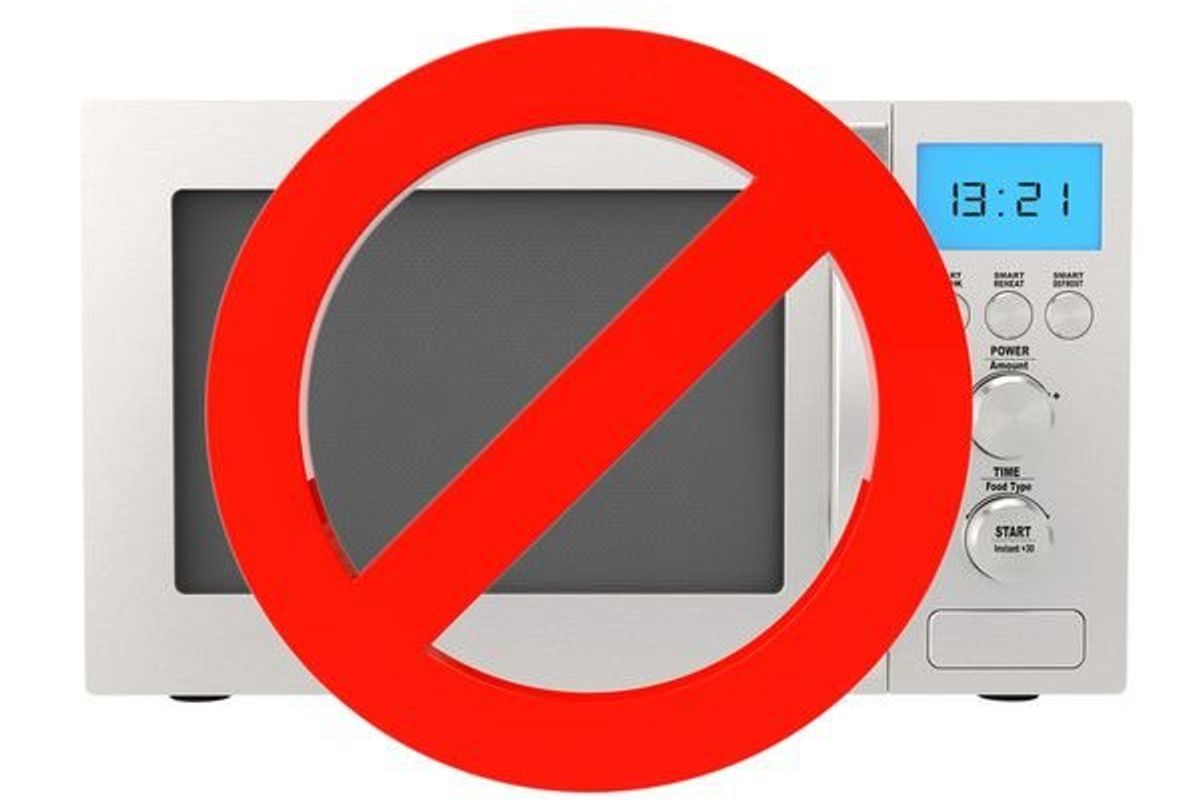

Stacey Feintuch
Stacey Feintuch is a Blogger, Freelance Writer, Public Speaker and Young-ish Widow
Full BioLearn about our editorial policies
Medically Reviewed
It's hard to imagine life without a microwave. It allows us to bake a potato in minutes or defrost the chicken we forget to take out of the freezer last night. Unfortunately, microwaves can't tackle everything. Some items should never be nuked, as they can cause sparks, explosions or fires.
Here are some tips to avoid microwave mistakes.
1. Chinese take-out containers. Those white containers have handles made of metal. And metal is something that can start a fire because it reflects the microwaves. Instead, use a microwave-safe plate or bowl to warm it.
2. Hot peppers. Want to dry peppers? Don't use your microwave to do so. When you heat the pepper, it releases capsaicin (the active ingredient that makes them hot) into the air. The microwave's fan will disperse the capsaicin into the room and it can end up in your eyes and lungs—like you're pepper-spraying yourself.
3. Breast milk or formula. Microwaves heat baby's milk unevenly, and random hot spots can scald baby's mouth and throat. The U.S. Food and Drug Administration suggests heating bottles that are hard plastic, glass or with disposable inserts in two ways. First, you can place the bottle under hot, running tap water for one to two minutes until you reach the desired temperature. Second, heat water in a pan on the stove. Remove the pan from the heat and put the bottle in it until it's warm. Always shake the liquid to even out the temperature and test it on the top of your hand (not your wrist which is an area that's less sensitive to heat) before feeding—you want it lukewarm.
4. Aluminum foil. No food completely covered by aluminum foil or in a covered metal pan should be microwaved, according to the U.S. Department of Agriculture (USDA) Food Safety and Inspection Service. If you put aluminum foil in the microwave, you can start a fire. The microwaves will bounce off the foil, and since your food can't absorb the microwaves, the food won't get heated. The reflected waves can also damage your unit. You may be able to use small amounts of foil to shield areas of foods (like poultry wings and drumsticks) to prevent them from overcooking. Here, you'll want to use foil that's new and smooth, and no more than one-quarter of the food should be covered with foil, says the USDA. Consult your owner's manual and follow the recommendations.
5. Nothing. If you accidentally press "start" on an empty microwave, act fast. If you turn on the microwave with nothing in it, you could potentially ruin your microwave and start a fire. With no food or liquid to absorb the microwaves, the magnetron (which makes your microwave work) will absorb the microwaves. It can damage your microwave to the point of possibly starting a fire.
6. Lunch bags. The intense heat in the microwave may cause the brown paper bag to ignite, causing a fire. The same goes for the brown paper bags from the grocery store. The bag's glue, ink and recycled materials may also emit toxic fumes when exposed to heat, says the USDA.
7. Eggs in the shell. Since microwaves cook so quickly, steam will build quickly inside the egg. The steam and pressure will have nowhere to go, causing the egg to explode. You'll be left with a big mess to clean up, and you could possibly blow off the microwave door.
8. Plastic bags. If you microwave food inside a plastic bag, the steam will build up and the bag can explode or melt.
9. Grapes. Because grapes are made mostly of water, you'd think they'd be fine, or just become raisins when microwaved. Here, the combination of their spherical shape and waxy peel causes the microwave to create plasma (almost like a gas). And that means sparks jump from grape to grape or to the inside of your microwave, possibly destroying it.
10. Styrofoam containers without a special label. Because it's a type of plastic, it may release harmful chemicals into your food. Unless it's marked microwave safe, don't throw it in the unit.
11. Yogurt, margarine, sour cream or other one-time use plastic containers. These storage containers are intended to be used just one time. They're unable to withstand high heat and could melt or warp in the microwave. They also could release harmful chemicals into your food, says the USDA.
12. Plates with metal trim. As we've said, metals and microwaves don't mix. So make sure your holiday china and other dishware don't have any decorative metallic trim before you put them in the microwave.
13. Red sauce without a lid. Zapping red sauce won't harm you or the microwave. But you'll be left with a big mess and a little less sauce.
14. Travel mugs. If you tote your coffee to work in a stainless-steel mug, don't reheat that java in the microwave. The stainless steel will block the microwave's heat from warming the liquid and can damage your microwave. If it's a plastic mug, look for the microwave-safe label on the bottom. If your container isn't safe, transfer it to a microwave-safe cup.
You might be interested in





